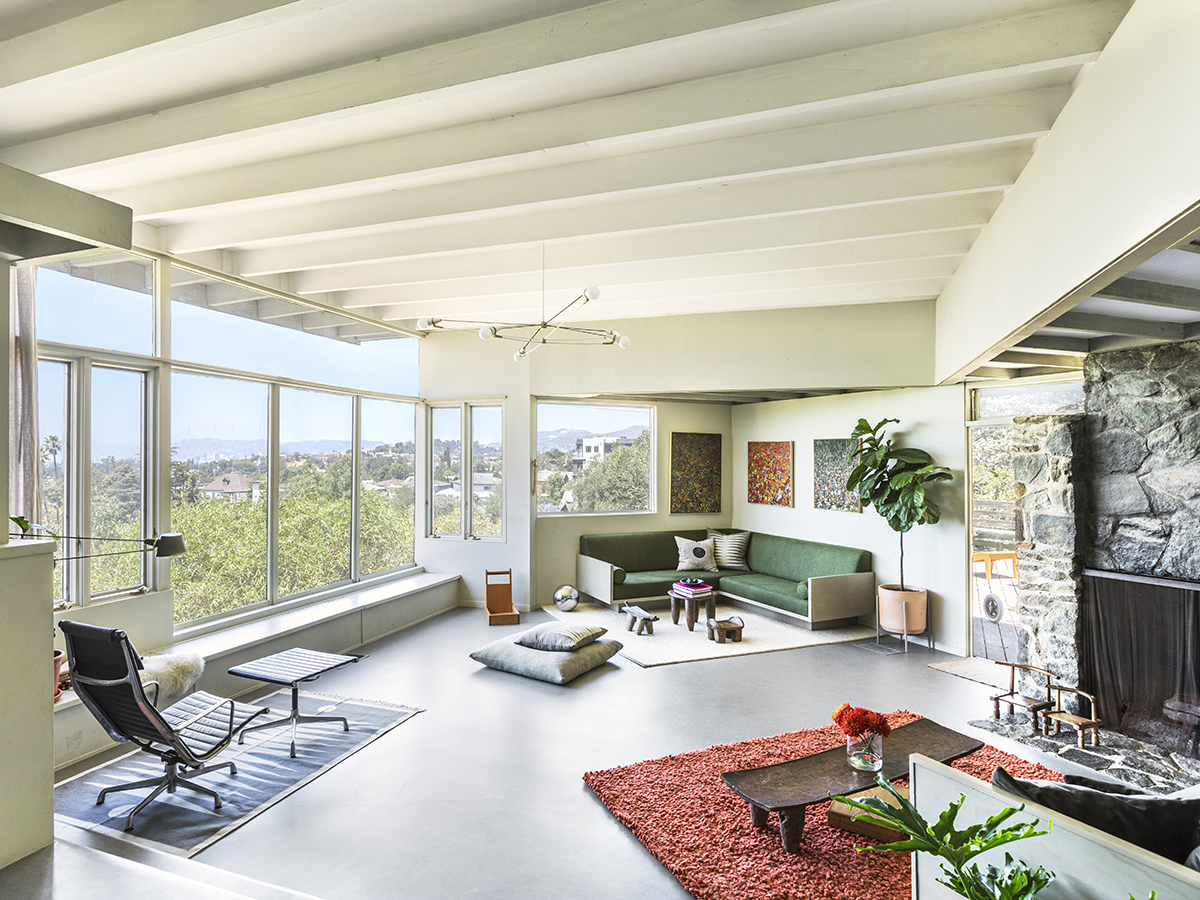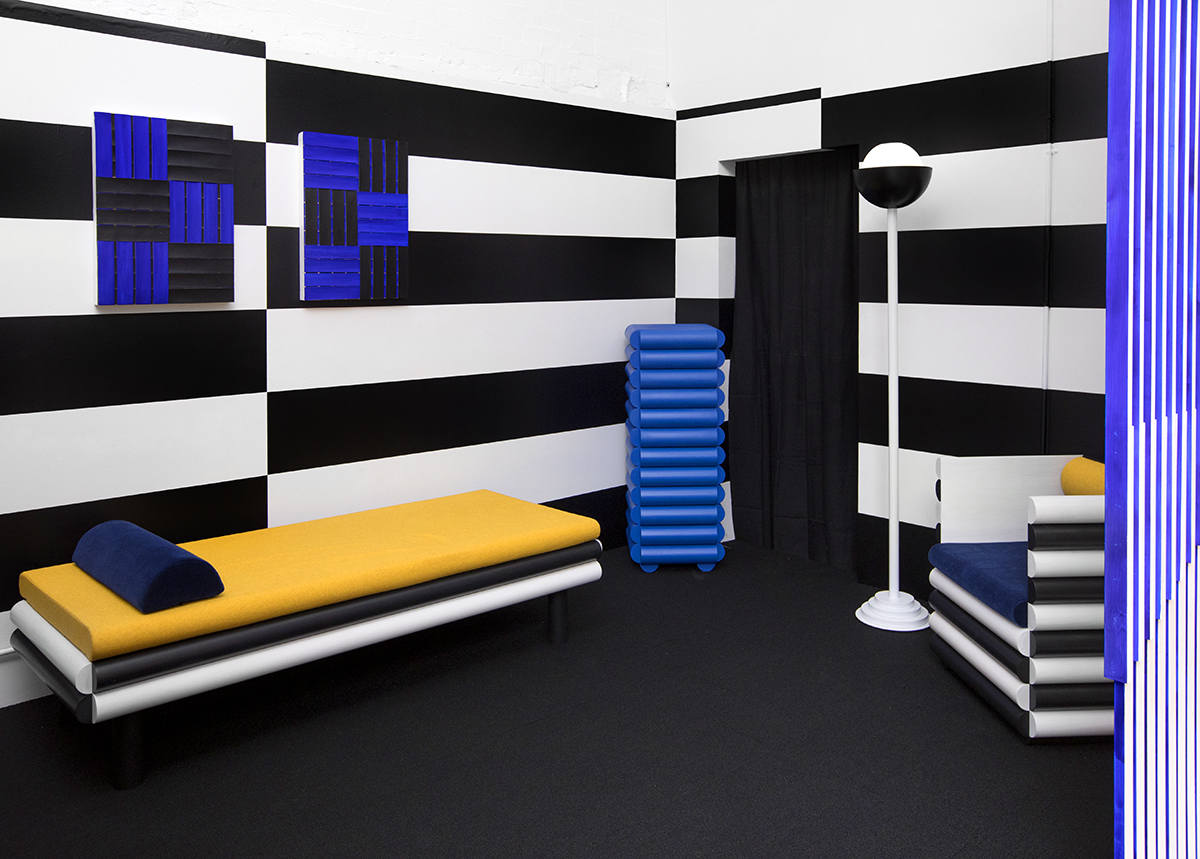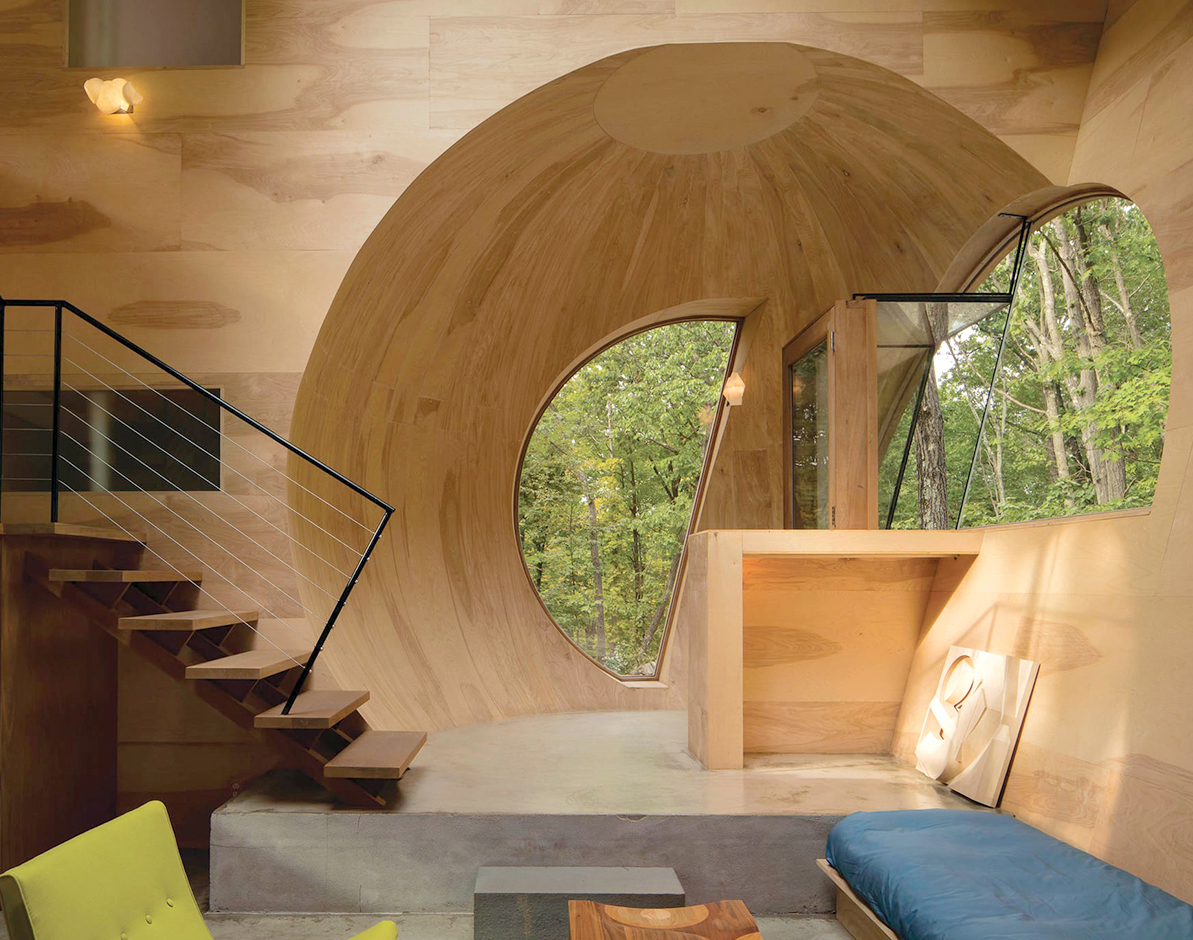
04.01.21
Interiors
How This Steven Holl House Went From Architectural Showpiece to Sold-Out Weekend Getaway
After the French graphic designer Sarah Hutchings recovered from cancer more than a decade ago, she decided to quit her job and focus on her family. To keep earning income, though, she started Airbnb-ing a bedroom in her home in Rhinebeck, a quaint town about two hours north of New York City. It’s a popular place for weekend getaways and country houses — Paul Rudd, Annie Leibowitz, and Rufus Wainwright all had or have homes there — so it didn’t take long for Hutchings’s hosting business to take off. She had begun managing properties for her brother, and her neighbors, when one day she received a particularly interesting proposal: The famed architect Steven Holl, whose 32-acre upstate property bordered her own, had built a jaw-dropping conceptual house in the woods, and hoped she might help him rent it.
Called the Ex of In House, the project had been designed by Holl and his team in New York almost as a manifesto — a paradigm of a rigorously eco-friendly dwelling that would “serve as an alternative to modernist suburban houses that sprawl in the landscape … A house of compression and inner voids.” But Holl realized that as a high-end rental, it could help fund the non-profit architecture school and artist’s residency he was developing on the property. Hutchings jumped at the chance to collaborate on the initiative, and leveraged her hosting expertise to cozy up the house and make it amenable for overnight stays. Now she acts as a sort of architectural ambassador for its guests, explaining the ideas behind its design and guiding them through the unique experience of spending time inside it.
Predictably, the house is most often booked by architecture buffs who are looking for exactly that experience. And the pandemic has only made the listing more popular, as New Yorkers without the option to vacation in faraway places have been seeking out escapes that are closer to home. “Staying there really just resets your mind before you have to go back to your real life afterwards,” says Hutchings. “It’s a new energy, and people really like that.” We spoke to her below as part of a series we’re doing this month on creatives with amazingly designed Airbnb properties. If her story inspires you to start renting your own space, visit this link to get started!
SELECT PHOTOS BY PAUL WARCHOL
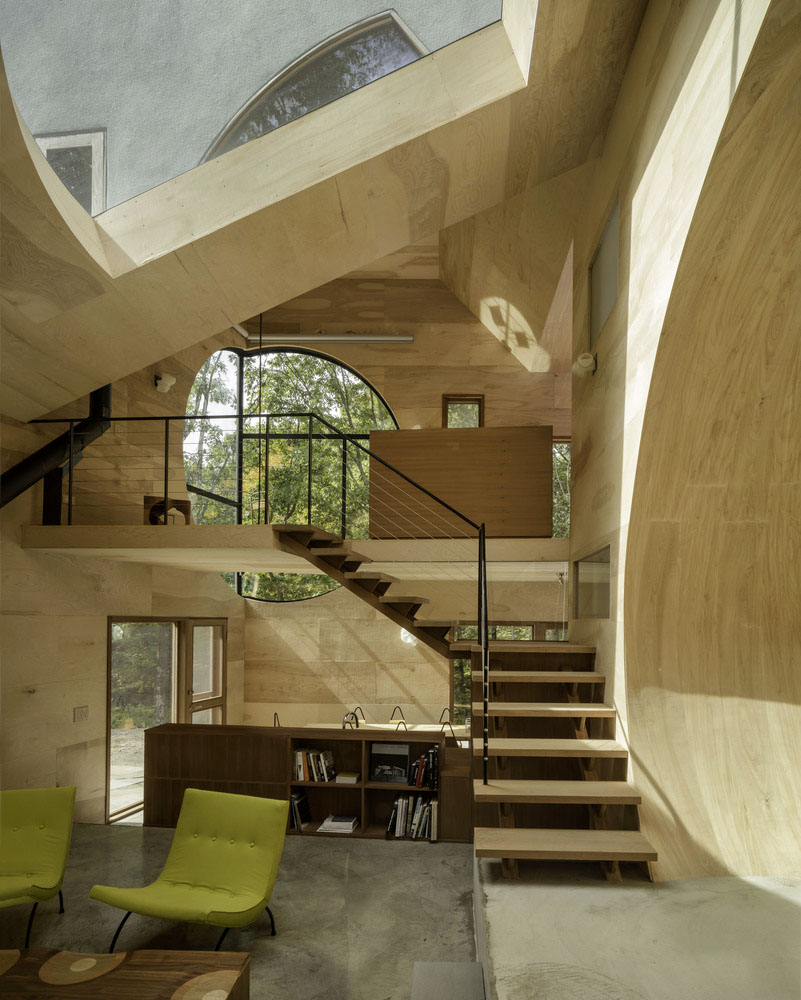
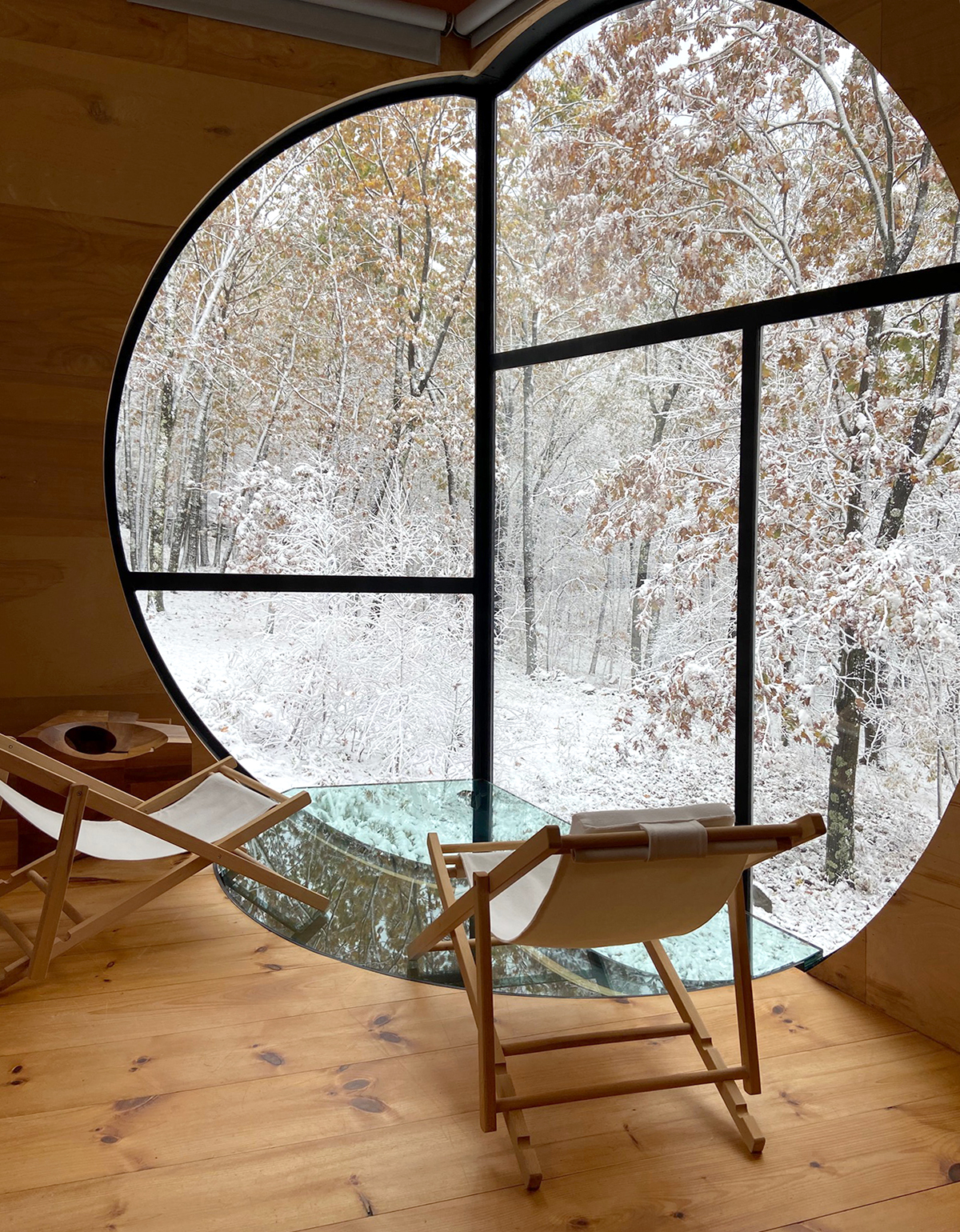
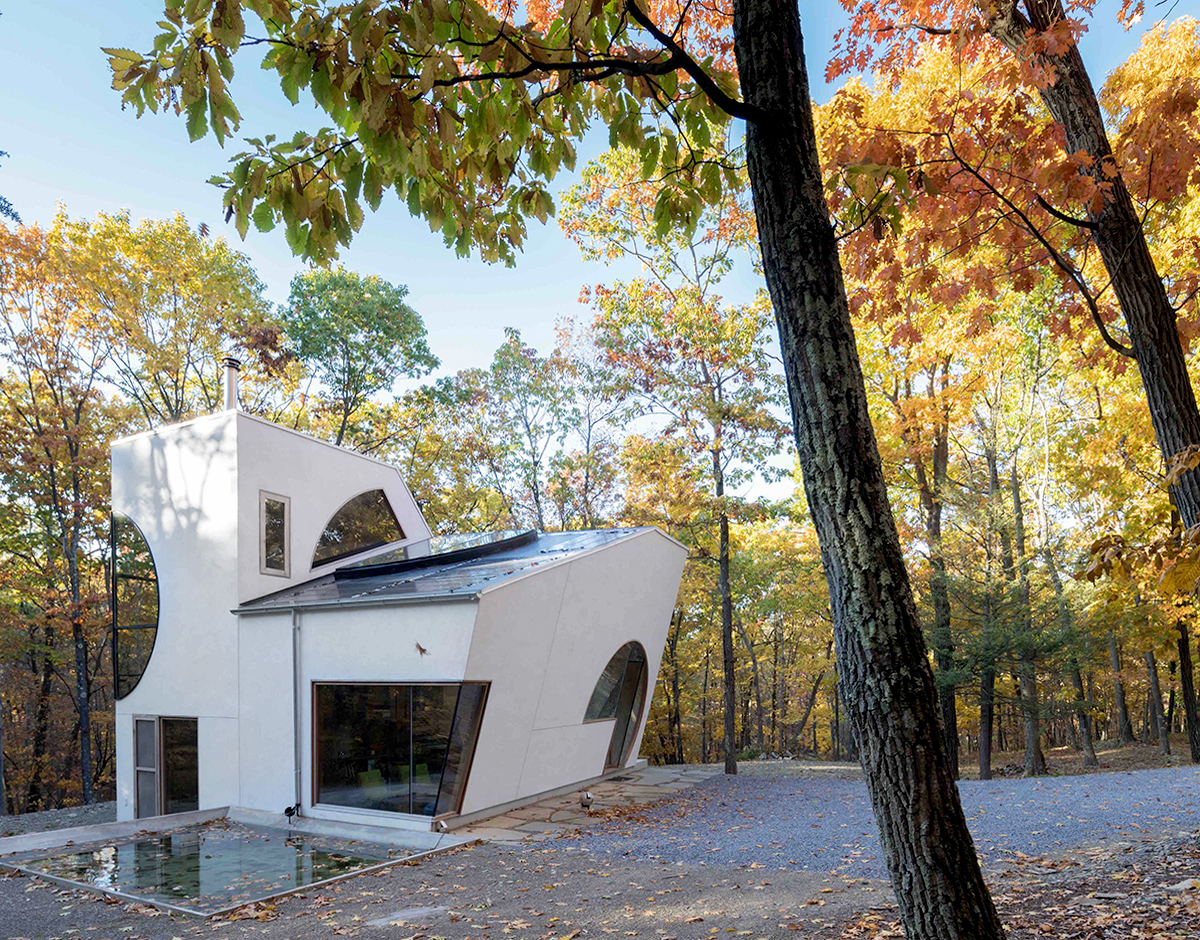
How and why did you start hosting, and how did you end up getting involved with Steven Holl’s project?
I’m French but I married an American man, and after living together in France for 10 years, we moved back to the US in 2007. We settled in Rhinebeck, which is where my husband’s parents live. My husband is a photographer, and my background is in marketing and graphic design. But before we moved, I had been very sick with cancer and had decided I didn’t want to go back to work. I wanted to take care of my children and make sure they’d see me every day. So in Rhinebeck we purchased a house that we turned into a homestead, and I started renting out our freestanding guest bedroom. Rhinebeck is a perfect place for people who want to escape the city for a couple of days. It’s two hours away from New York City, with no Starbucks, no McDonalds — it’s a pristine little area.
I did so well with my guest unit that I started Airbnb hosting the home of my neighbors, who were only coming up to their house maybe two weekends a month. Then my other neighbor happens to be Steven Holl, the architect, who had been living in Rhinebeck for 30 years and has 32 acres right next door to me that he’s turned into a non-profit architectural reserve, called Space T2.
About five years ago, he was telling me about his new project, a summer school for international architects. Part of that project was the Ex of In House, which he had just completed on the property. Steven does very little residential — he focuses on big architecture, like the Kennedy Center in D.C. — but the house was his team’s attempt to explore what residential architecture could be in the modern world. When the architecture students come to the school for a few weeks in the summer, and work with Steven on projects, the Ex of In House is part of what they’re studying. They can see not just how to create a model of a house, but what it takes to go from a model to the house itself. They have a final product that they can visit, to see the way the structure is put together.
Steven and his wife contacted me after a common neighbor told them about my Airbnb success. They needed a way to finance the T2 reserve projects, and fundraising was difficult, so renting the house was something to try. It’s empty most of the time except in the summer, so we decided to put it on Airbnb and see if people wanted to come stay in it for the weekend.
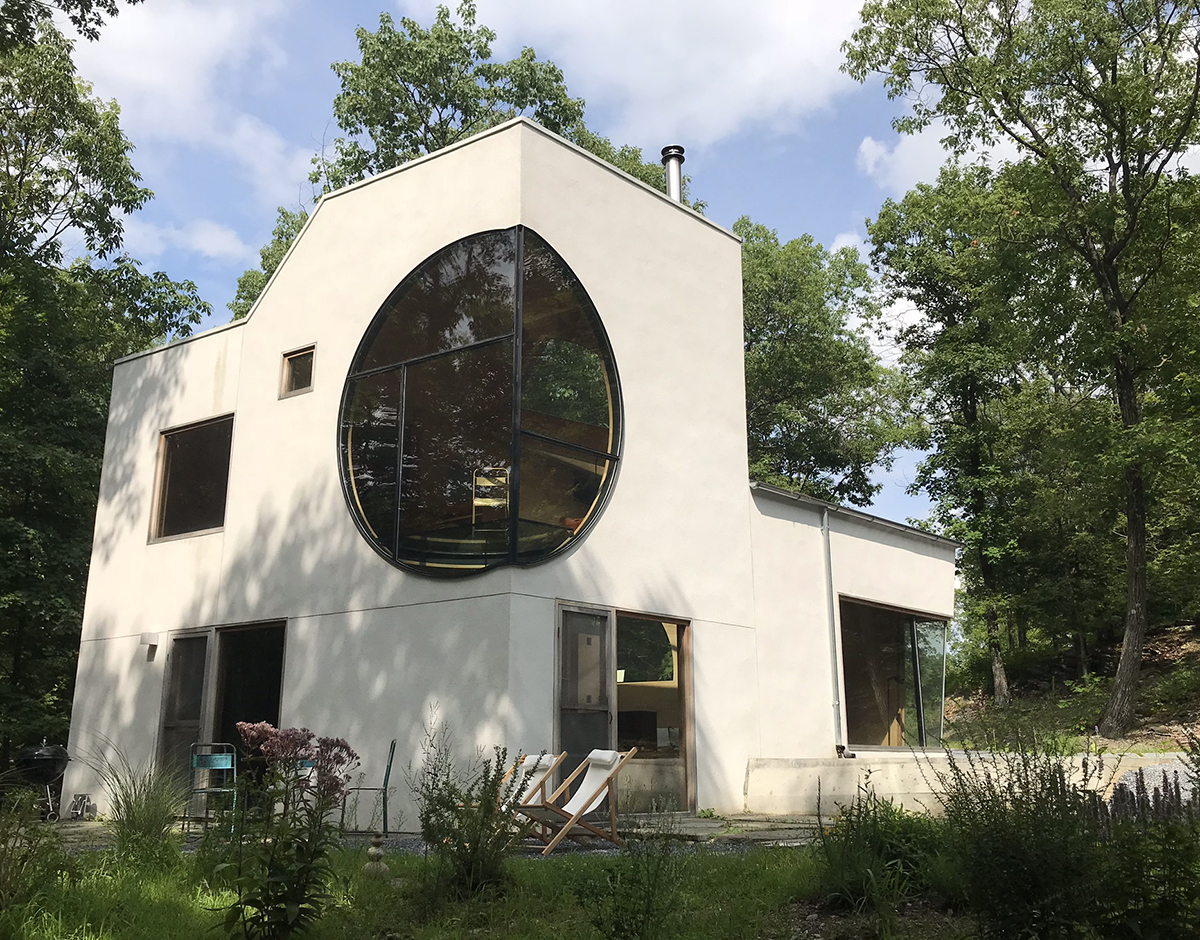
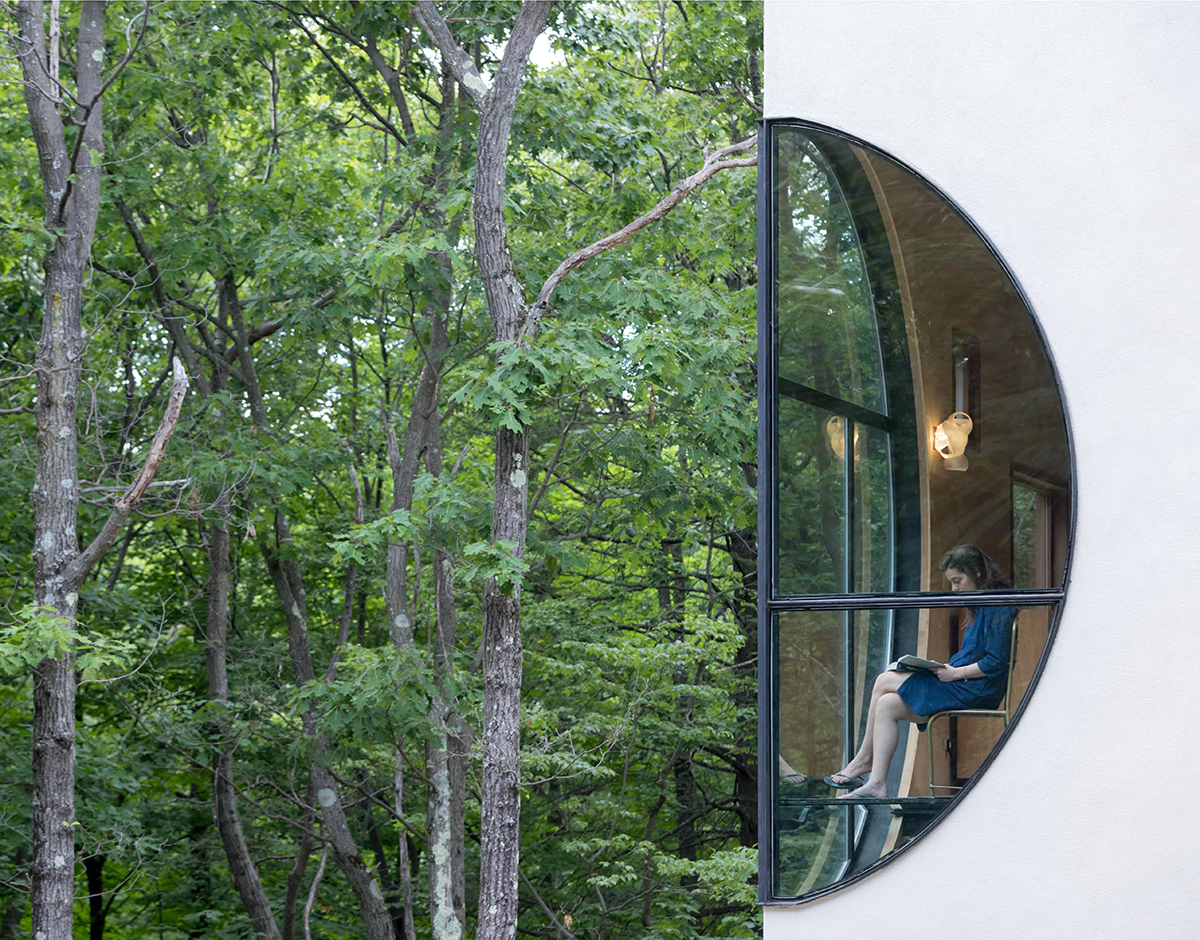
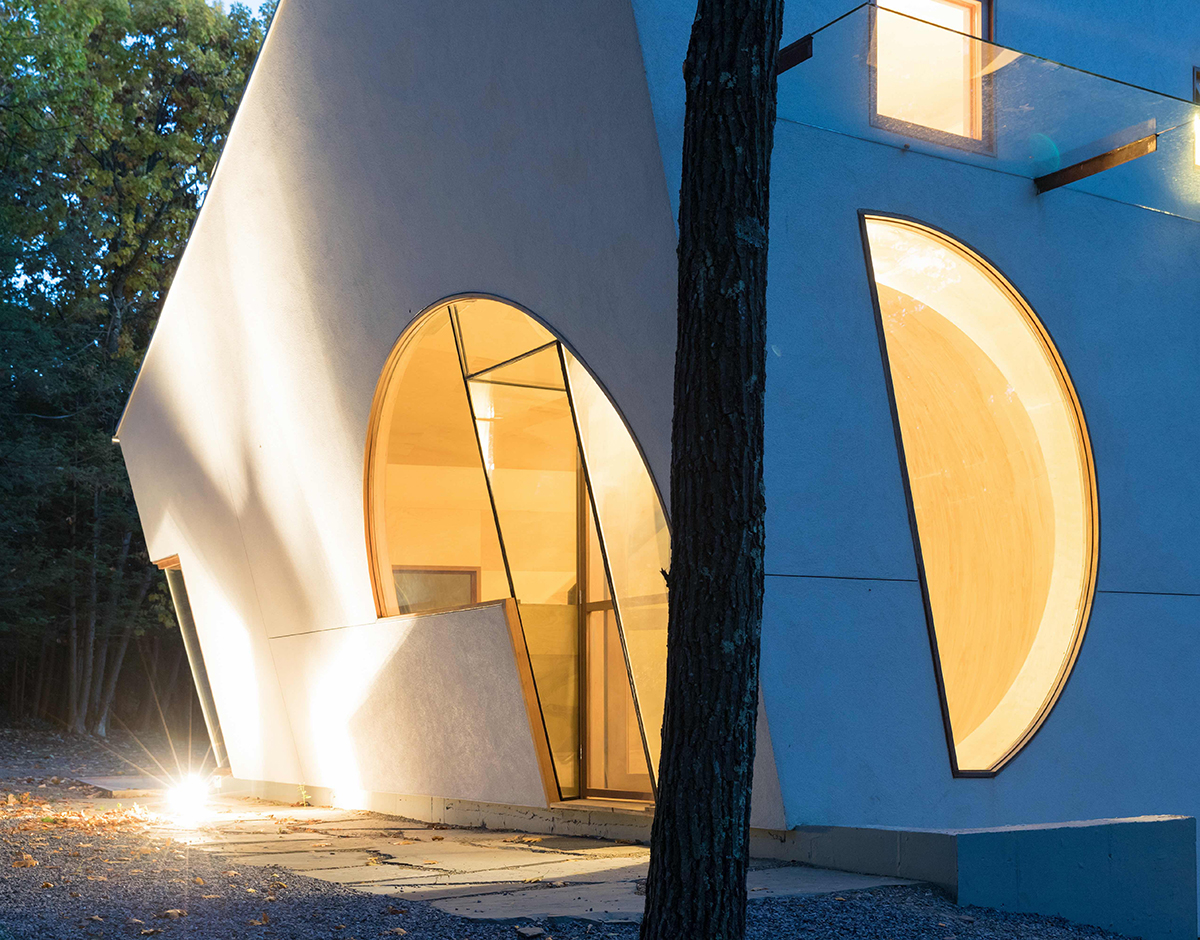
Can you tell us more about the house itself, and what makes it so special for guests to experience?
The house is about poetry and nature, and immersion in nature. Everything is made from natural materials, and it’s a solar house. It was supposed to be a standalone off-grid structure in the forest, but we had to connect it to the grid to get a certificate of occupancy from the local authorities. But in a perfect world it would be on its own in the middle of nowhere, perfectly self-sufficient.
There are no walls inside the structure — it’s like being inside a sculpture. The ceiling has a gigantic window, so if you turn off the lights you can see the stars; you can be inside and outside at the same time. It’s a unique place to be for a few days. We’ve had a lot of people visiting who are really into architecture. Until COVID it was booked completely, full time. When the pandemic started we decided to close the house, but we were able to reopen it in November, and again we’re almost completely booked as far out as I can see.
How did you prepare the house for guest stays?
It was a lot of little things. I set up a book collection inside the house, where we have all of the books about Steven’s work, so people can read about and better understand how the building came about. We have a wood stove that I set up for guests — a lot of people from the city have never used a wood stove, so I prepare everything so that all they have to do is strike a match; they don’t have to gather wood or anything. I also added nice towels, and nice linens that are monogrammed with the name of the house. I had free rein to do whatever I wanted to get the house ready for guest stays, so it feels really personal to me even though it’s not my creation.
I also had to think about the communication with guests. It’s important to give them all the details about the house, because it’s such a unique space. I have to make them aware that it’s a green house — everything is organic, and we try to have as little footprint on the environment as possible, so don’t take a two-hour shower, etc. We try to make people aware that you’re coming into an eco-conscious, eco-friendly space. And generally people are into it and happy to do their part.
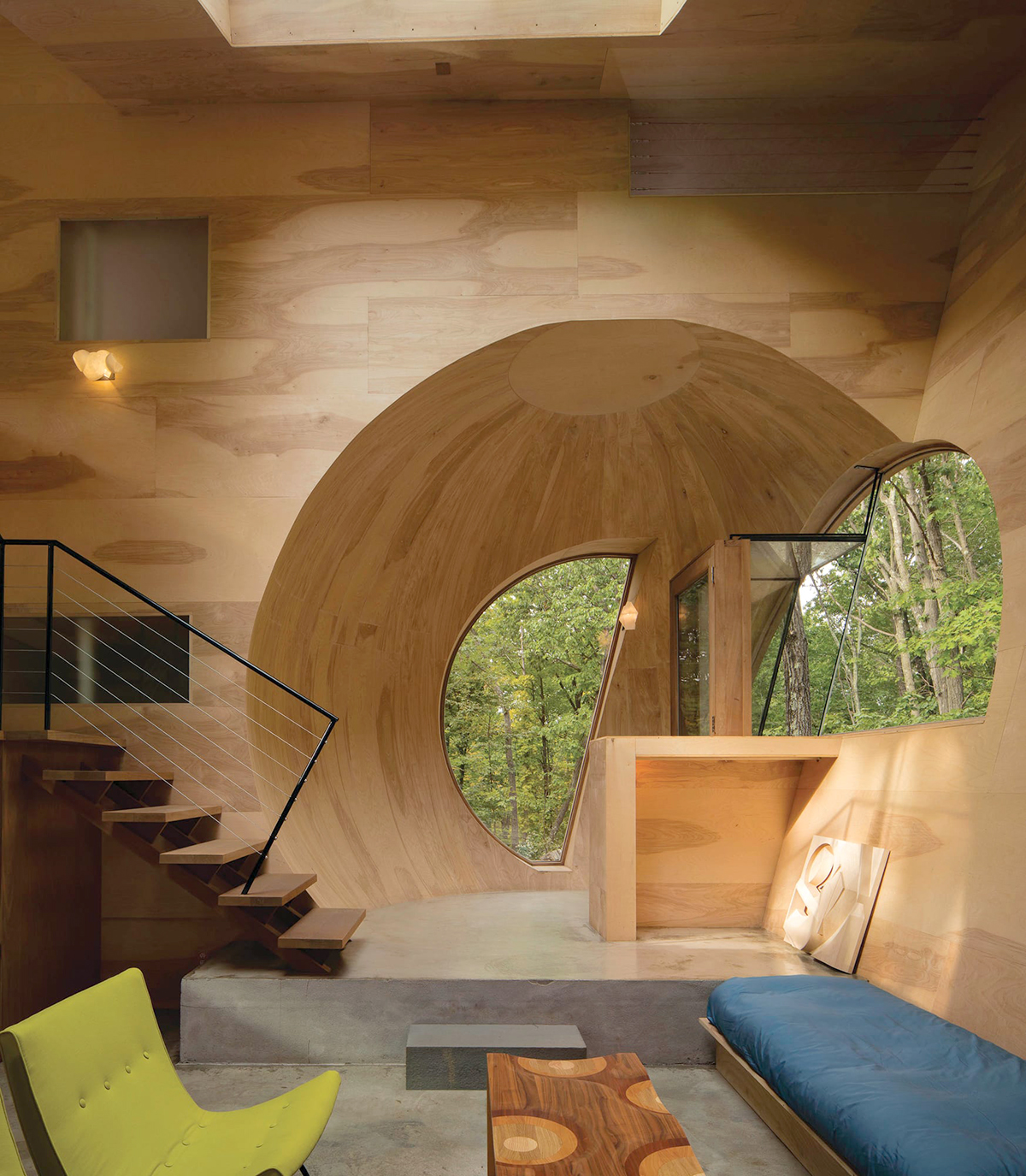
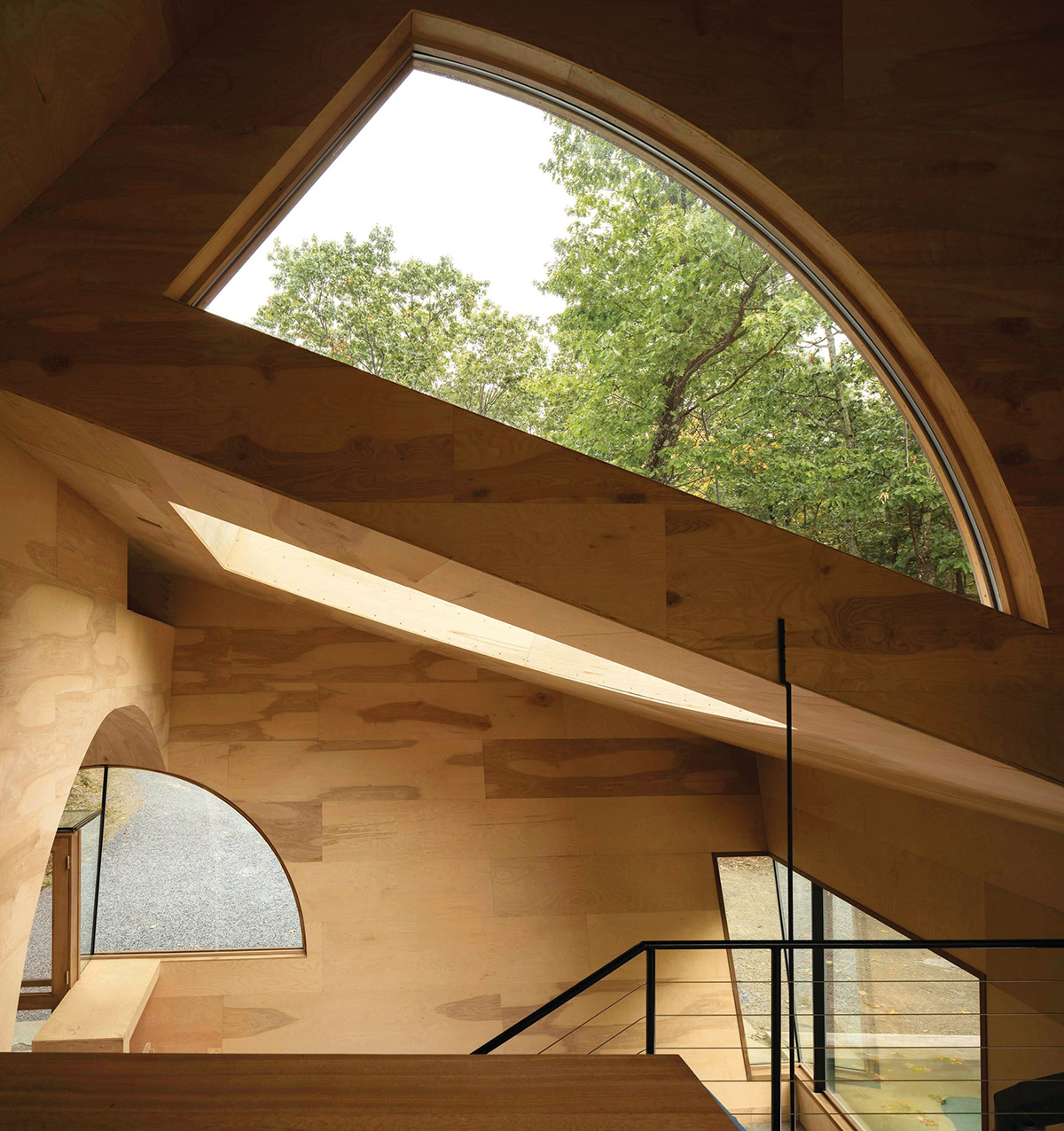
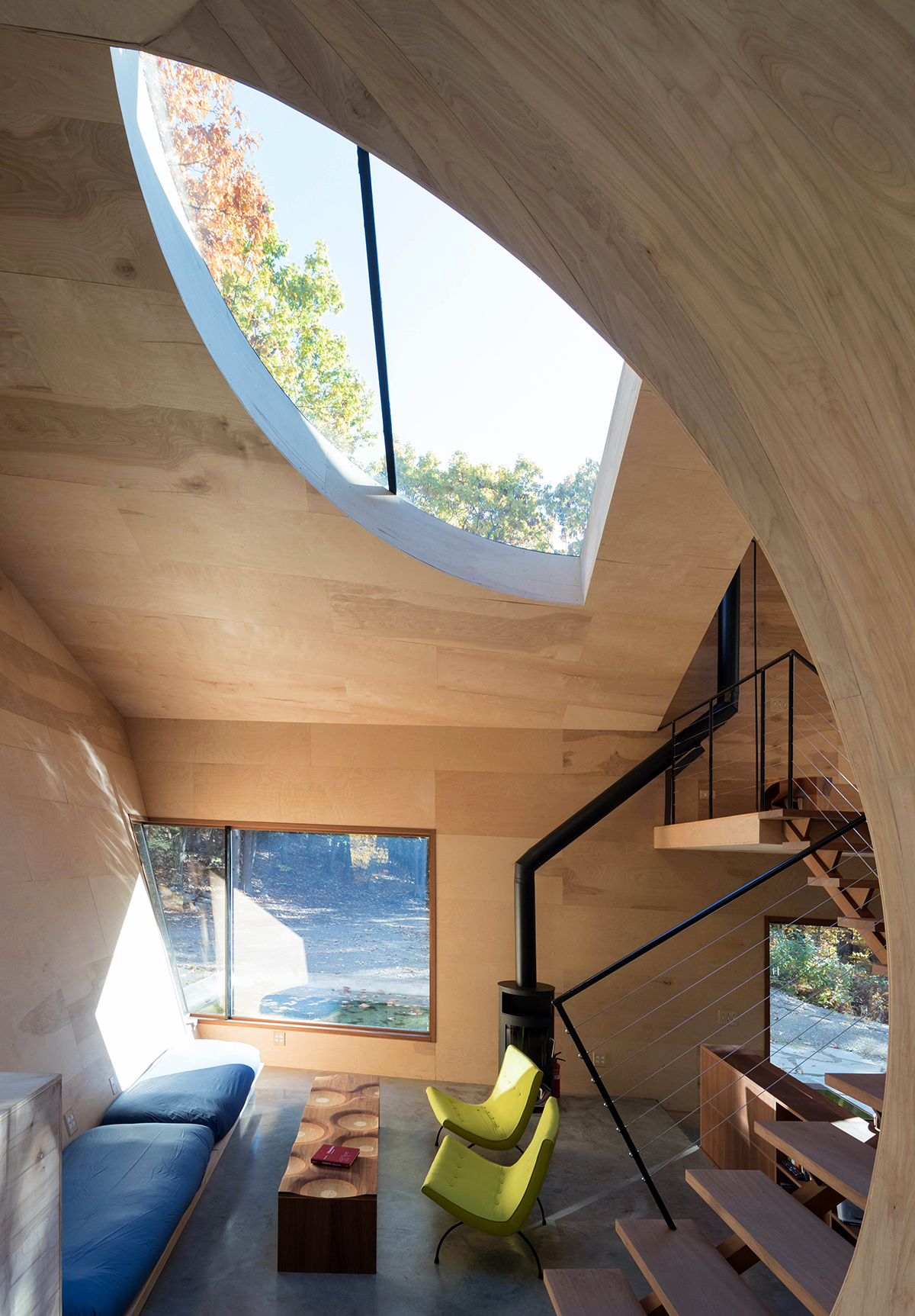
How else is staying at the house different from spending the weekend in a regular house?
You’re in the middle of the woods. You don’t see any other structures, but we have wildlife, so you do see turkeys, deer. Because there are so many windows, you can see the outside from anywhere you are inside the house. And we have a two-mile-long looped trail that starts at the house and circles through the woods, with sculptures set up along it. During the architecture school each summer we also have artists in residence — sometimes two or three artists — who are housed and paid, but have to leave a mark on the property. Each of them added a sculpture or artwork on the trail, for instance a series of gigantic metal springs that are 12 feet tall, and when you touch them, they bounce around and resonate with each other.
Did Steven design the interiors of the house? Who created all the furniture?
Yes, he designed almost every piece you see. The only ones not designed by Steven are the two bright green chairs in the main space, which are original Art Deco chairs from the ’60s or ’70s, and are part of his private collection. But the curved coffee table in front of them, all the furniture in the kitchen, the countertops, the doors with indentaitons instead of handles, the light fixtures — they’re all his design. Actually the light fixtures are reminiscent of the forms and shapes of the house itself. They’re all fabricated by a 3-D printer, using a natural plastic made from corn.
We also have a stool that looks like a block of wood, but if you look at it from different angles, it was actually carved out with the shape of the house inside of it. It’s a stool, but also a sculpture.
There’s a really interesting-looking, tall beehive shape in one of the rooms. What is that exactly?
Just inside the entrance to the house, there’s an interior dome shape, and in the bathroom above it, you’re on the outside of the dome, and the shelves are the outer skeleton of its structure. We left it open because it was so interesting to see. We thought the architectural students coming in the summers would want to see the process of making something with such a specific shape.
When you’re building an ambitious structure, the architects create the concept, but the builder has to find a way to build it — that’s where the builder’s skills show. They have figure out a way to bring the architect’s vision to life.
The first concept for the house was to make it by taking a gigantic cube of wood and carving out the dome, but that ended up being unrealistic because of how large the cube would have to be. So they came up with building the outer dome structure and lining it with maple plywood. On top of that structure we now have a twin bed. We call it The Mountain.
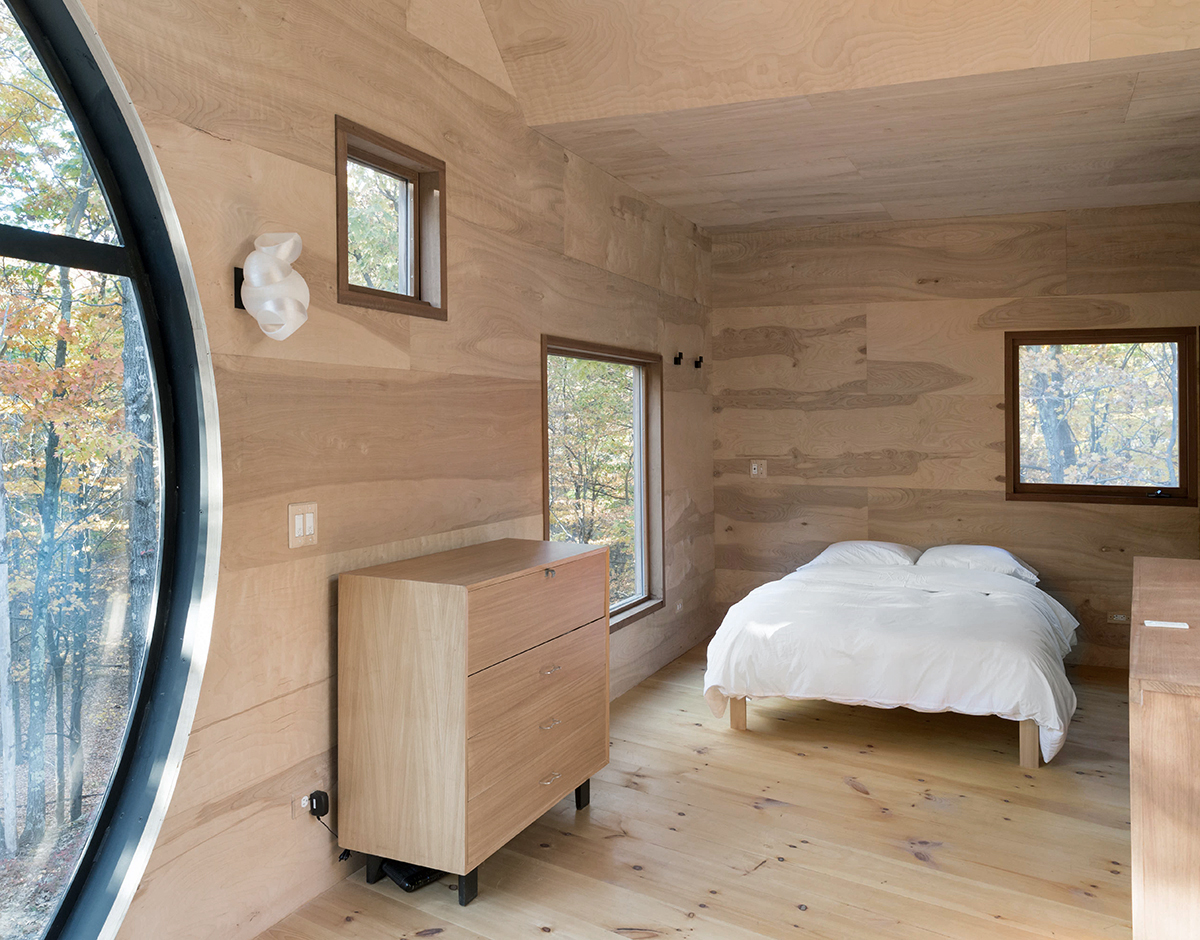
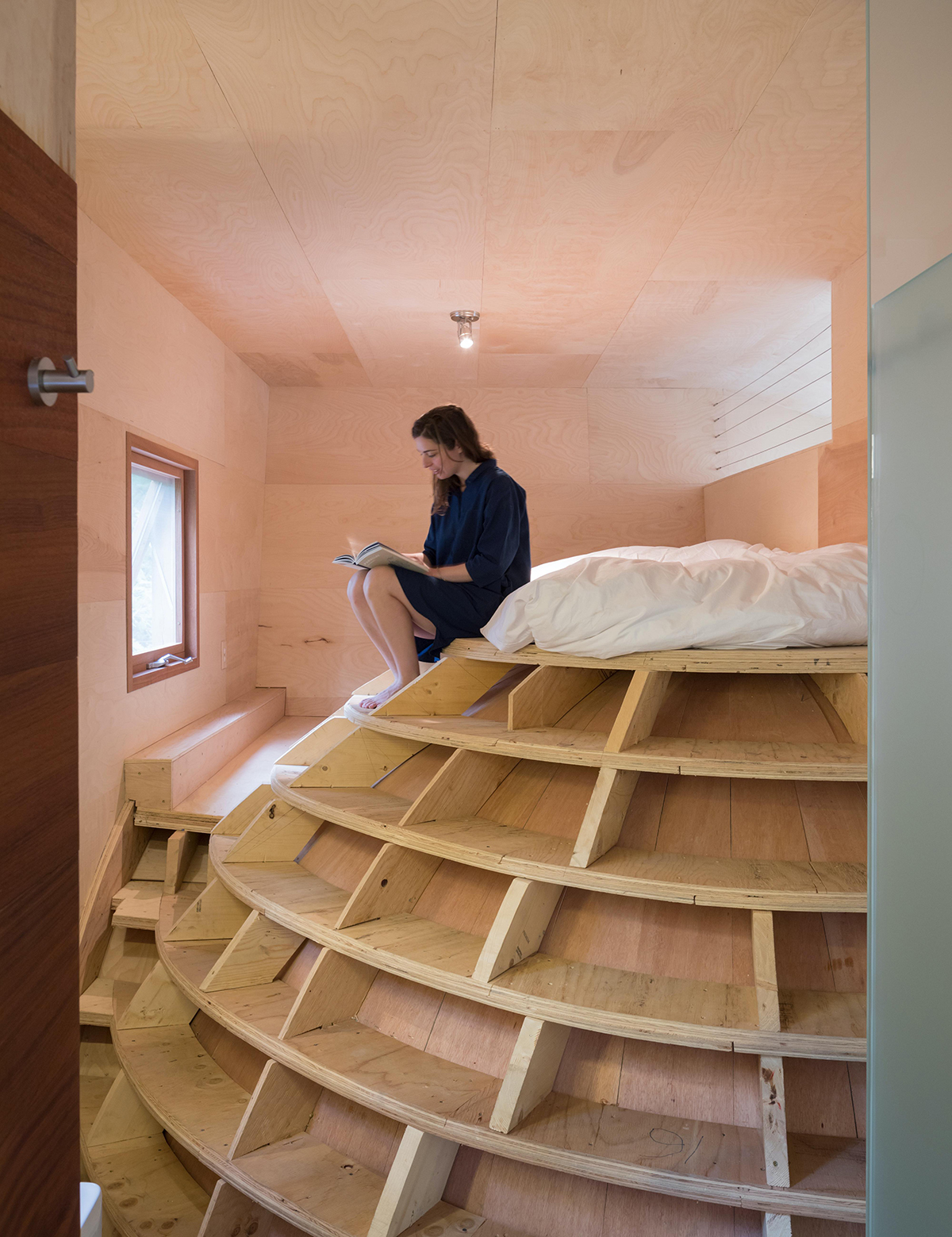
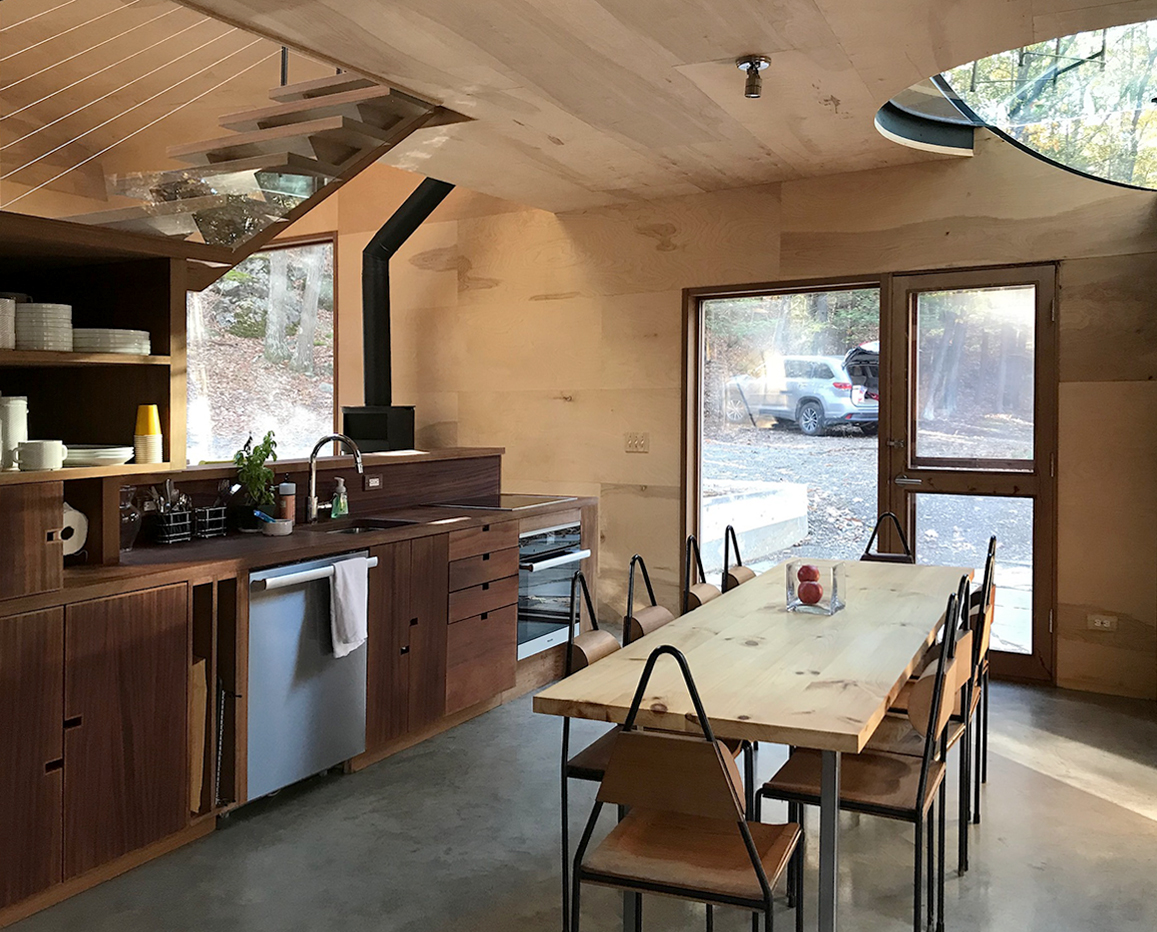
Do you feel like your past as a designer has come back into play at all in your work as an Airbnb host?
Yes, in the sense that I have a good eye for setting things up in ways that look good. You have to make the place pleasing to the eye when people first arrive. It’s like a stage. They have to open the door think, WOW. This house is simple, and sparse, with no art on the walls — that’s because the walls are the art we want people to see. We want to keep the focus on the house. I did think about that because of my background. I went to art school before I did marketing and design, at the School of the Louvre in Paris. You eventually get to have an eye for what looks right.
What else do you think makes for a great host?
There are a lot of people out there who complain about hosting and what can go wrong. There’s always going to be the guest who leaves the house a mess. But the key is to be kind, and if you walk the guest through what you’re expecting them to do, and how they need to behave in your space, most of the time it works great. With the Ex of In House, I tell people this is a gem, this is a living sculpture, please be respectful. You’re entering an experience that’s going to be awesome, but please be awesome back to us. If you’re kind, people are kind in return. But if you’re a host that’s overbearing and has a million rules, people are going to feel weird and pressured. That said, it’s obvious that this is not a motel — and it’s also not cheap. You have to want to spend the money to be there. So that makes it easier for us.
So I guess the experiment has been a success?
Yes, and we’re actually working on a second property, in the same area. Steven has been buying land to try to compound everything together, and he’s working on a small dwelling of the same type, on a nearby lake. However this time, in the creative process, we’re already thinking about it as an Airbnb property. The Ex of In House was not originally intended to be rented — when they created it they had no idea that Airbnb existed, or that people would even be interested in renting it. But this second project will actually have the experience of the traveler in mind.
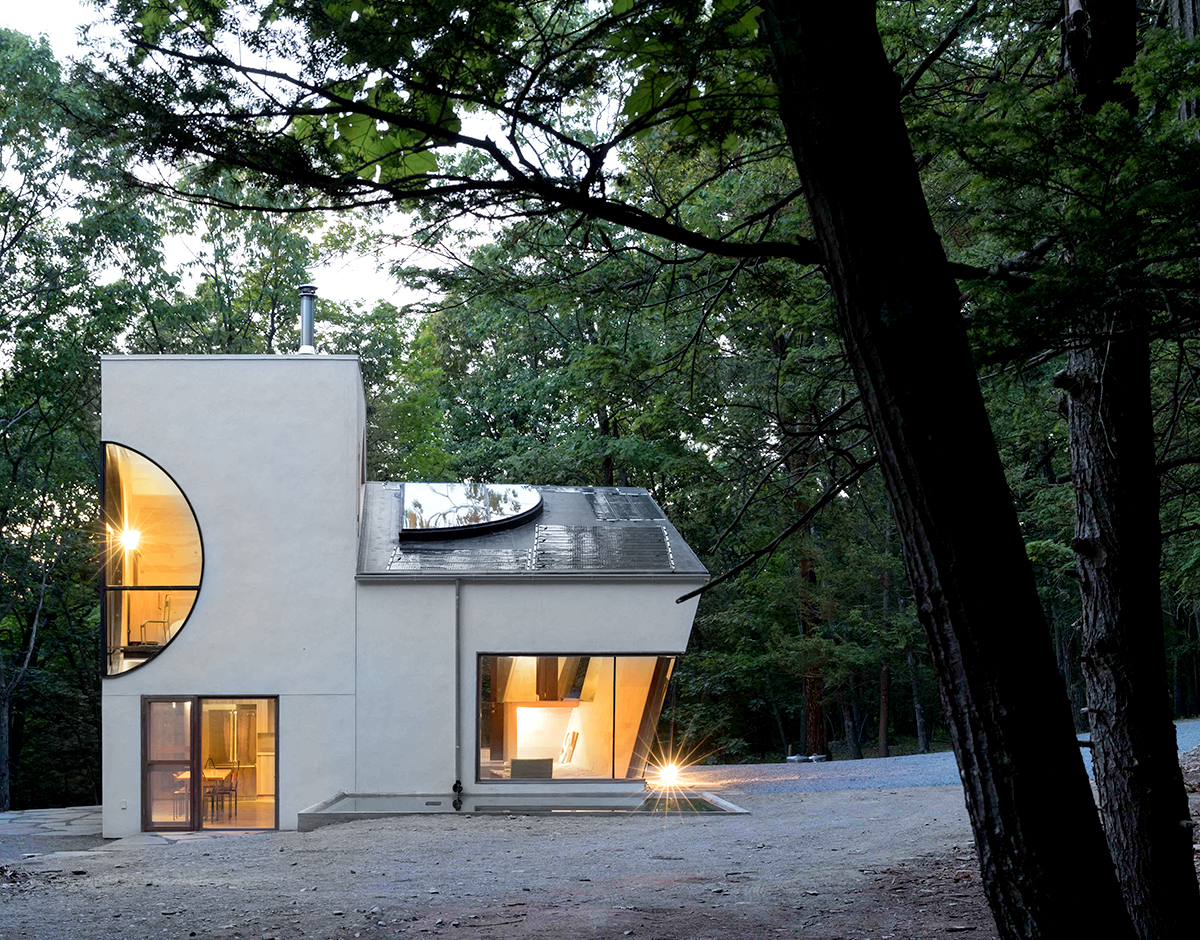
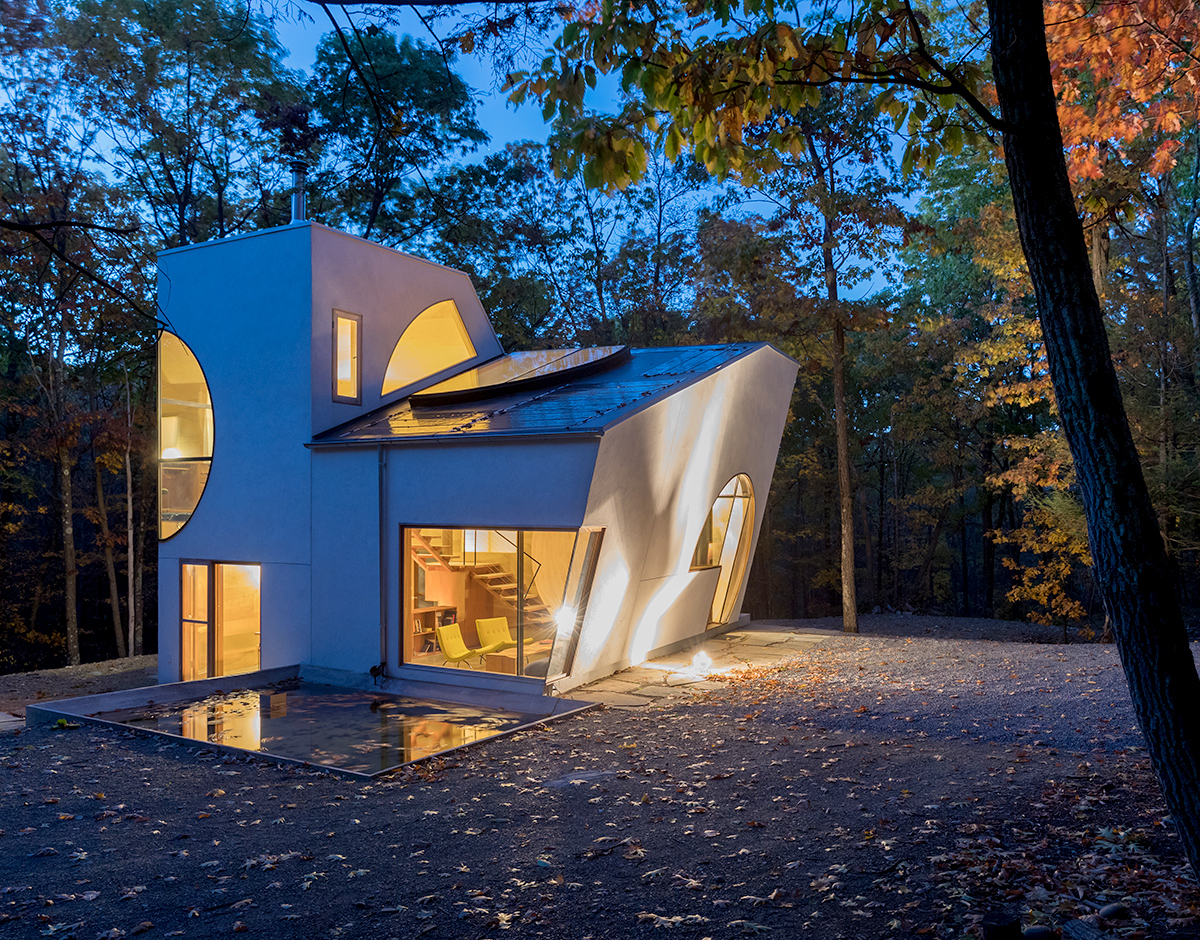
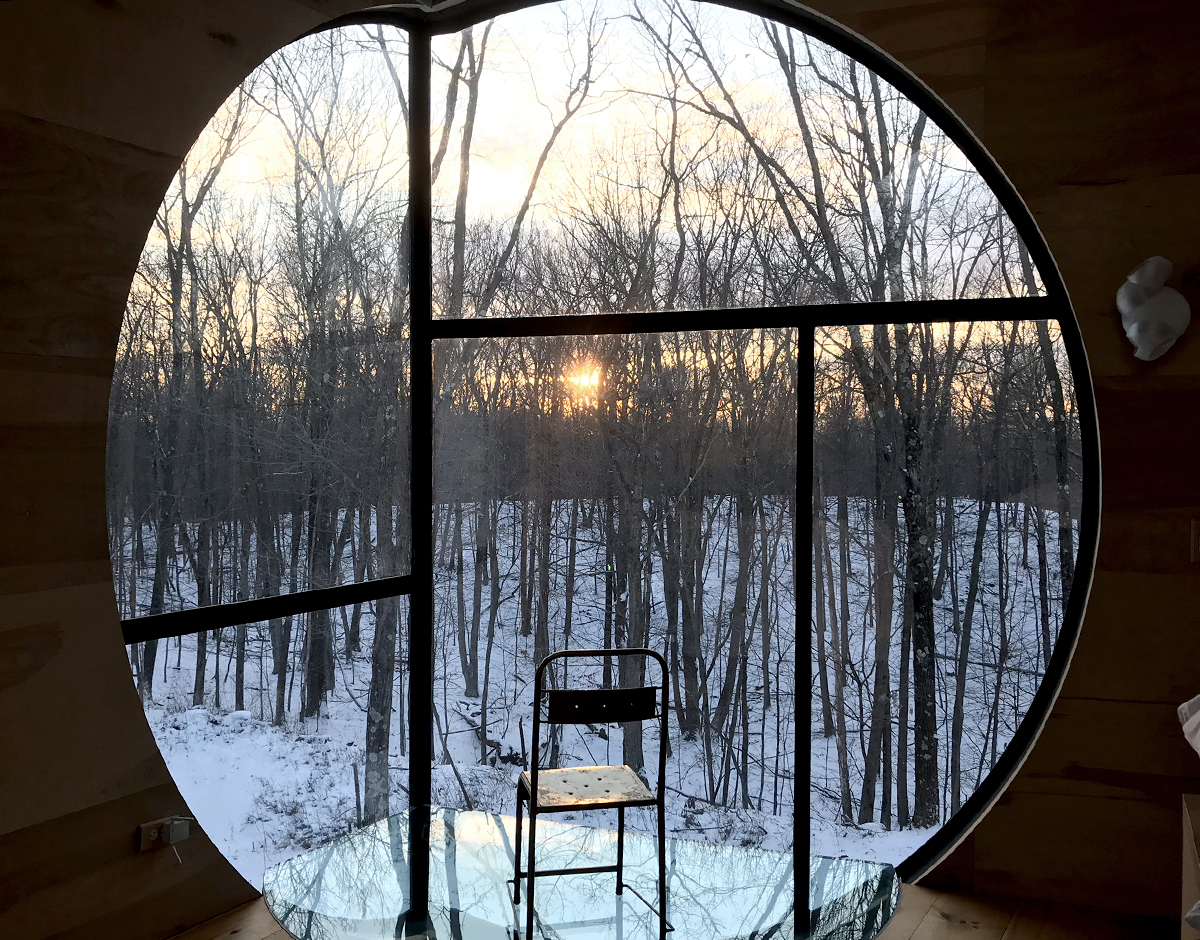 This post was sponsored by Airbnb, but all thoughts and editorial content are our own. Like everything at Sight Unseen, our partner content is carefully curated to make sure it’s of the utmost relevance to our readers. Thank you for supporting the brands that support Sight Unseen.
This post was sponsored by Airbnb, but all thoughts and editorial content are our own. Like everything at Sight Unseen, our partner content is carefully curated to make sure it’s of the utmost relevance to our readers. Thank you for supporting the brands that support Sight Unseen.

